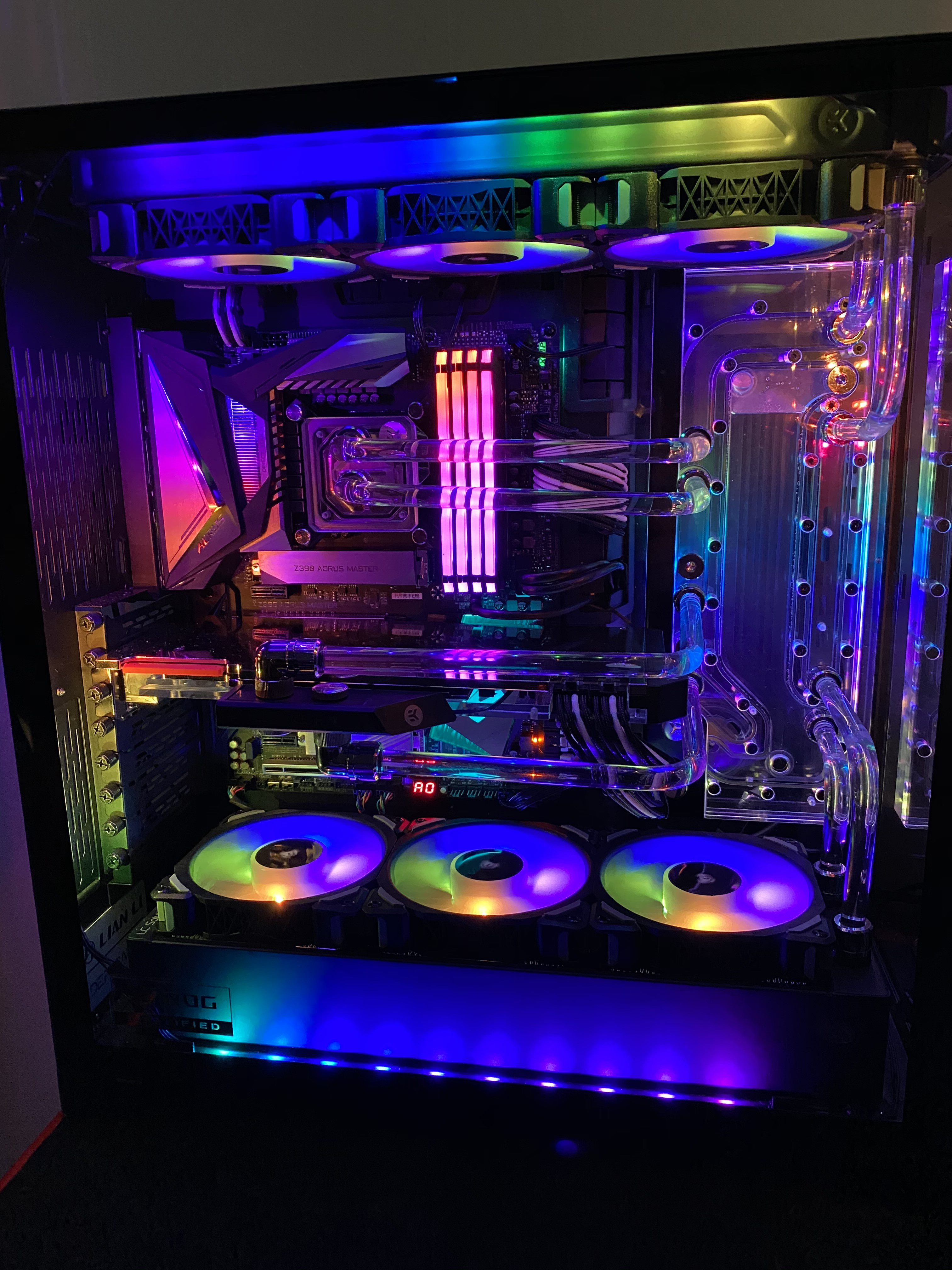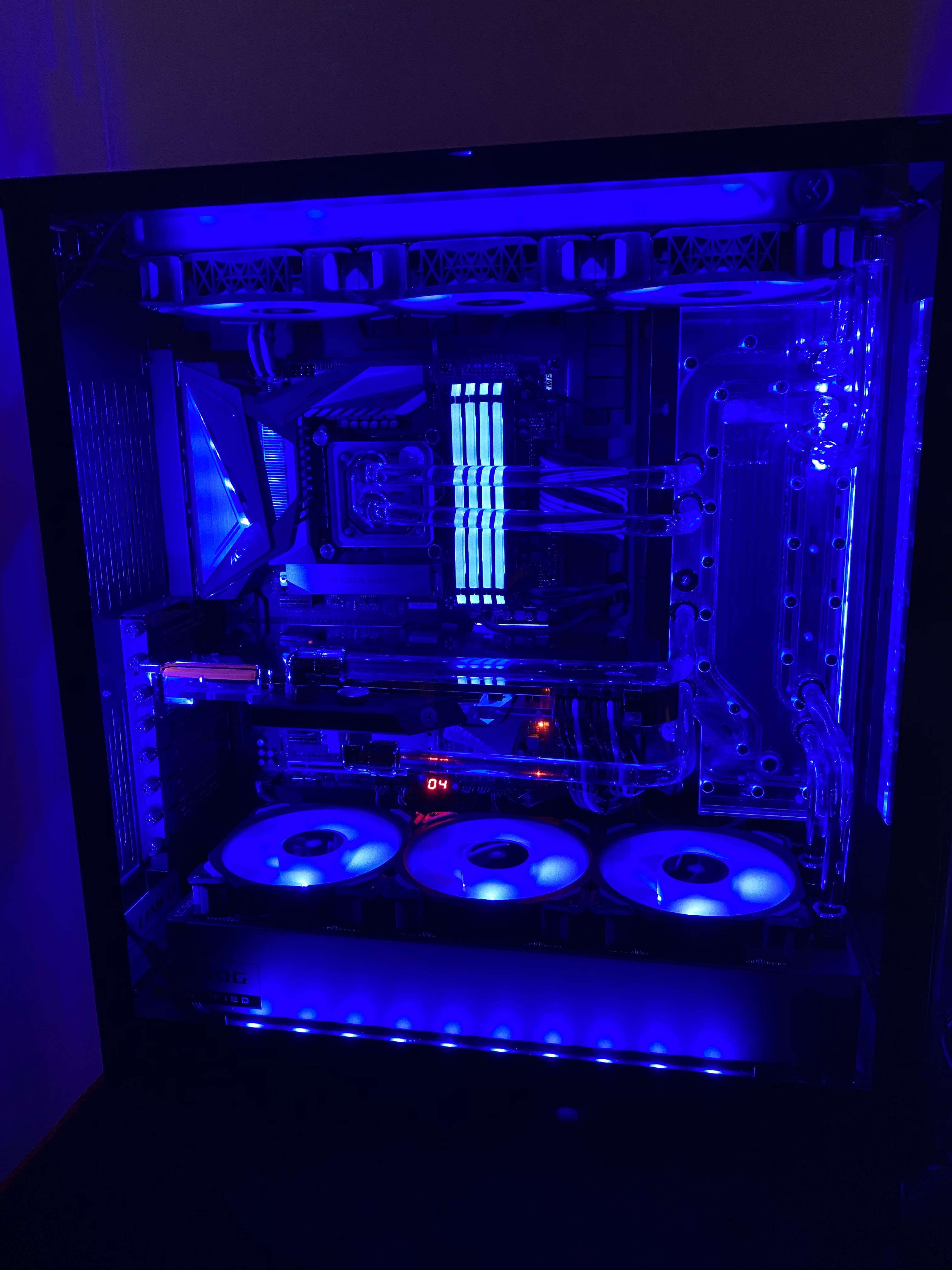Hi there,
I ran my first water-cooled loop just over a week ago now using the Lian-Li dynamic xl case.. Images below to give you an idea
https://ibb.co/2vTht2R
 https://ibb.co/pPxr8c6
https://ibb.co/pPxr8c6

now I'm having to RMA the CPU block as the RGB is broken but it got me looking at a few things.. At the time of installation, I didn't seem to notice there was an arrow on the block that seems to be indicated on the online manual https://www.ekwb.com/shop/EK-IM/EK-IM-3831109810347.pdf
I have the D-RGB version (https://www.ekwb.com/shop/ek-velocity-d-rgb-nickel-plexi ) so I'm not sure why this would differ from the one illustrated in the manual
Apparently after much googling, because it has the jet thing inside its important to ensure this goes in properly, but as I'm using the Lian-li distro block I'm trying to work out exactly the flow direction... From what I can see on the manual https://www.ekwb.com/shop/EK-IM/EK-IM-3831109822128.pdf (PAGE 5) the outlet which I presume is the outlet from the reservoir and not where the outlet should come in to...
Has anyone any experience with this particular setup or can advise? Is it true that it has to go in through the specific inlet/outlet which would make sense why my temps has been slightly higher than I initially expected (high 60's in long gaming sessions), prime 95 it started to throttle and this is at stock speeds i9 9900k with the regular 4.7 ghz turbo.
If so which direction is the flow on this unit? am I right in thinking the top would where the cpu block inlet should be..
I ran my first water-cooled loop just over a week ago now using the Lian-Li dynamic xl case.. Images below to give you an idea
https://ibb.co/2vTht2R


now I'm having to RMA the CPU block as the RGB is broken but it got me looking at a few things.. At the time of installation, I didn't seem to notice there was an arrow on the block that seems to be indicated on the online manual https://www.ekwb.com/shop/EK-IM/EK-IM-3831109810347.pdf
I have the D-RGB version (https://www.ekwb.com/shop/ek-velocity-d-rgb-nickel-plexi ) so I'm not sure why this would differ from the one illustrated in the manual
Apparently after much googling, because it has the jet thing inside its important to ensure this goes in properly, but as I'm using the Lian-li distro block I'm trying to work out exactly the flow direction... From what I can see on the manual https://www.ekwb.com/shop/EK-IM/EK-IM-3831109822128.pdf (PAGE 5) the outlet which I presume is the outlet from the reservoir and not where the outlet should come in to...
Has anyone any experience with this particular setup or can advise? Is it true that it has to go in through the specific inlet/outlet which would make sense why my temps has been slightly higher than I initially expected (high 60's in long gaming sessions), prime 95 it started to throttle and this is at stock speeds i9 9900k with the regular 4.7 ghz turbo.
If so which direction is the flow on this unit? am I right in thinking the top would where the cpu block inlet should be..
Last edited:



